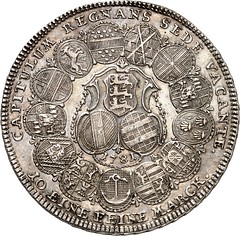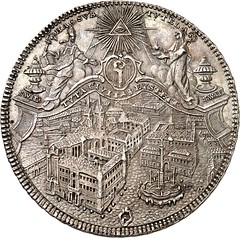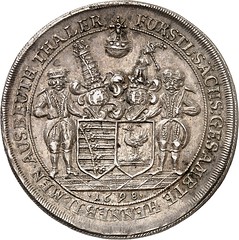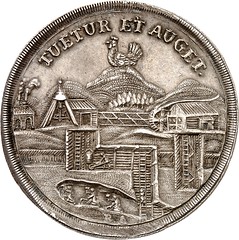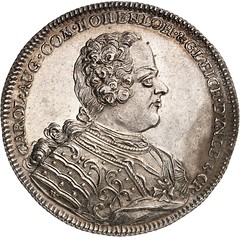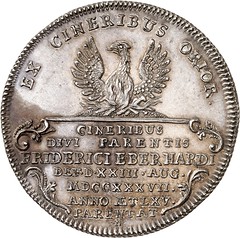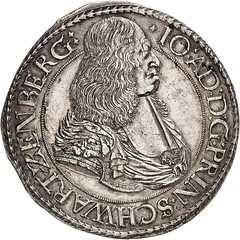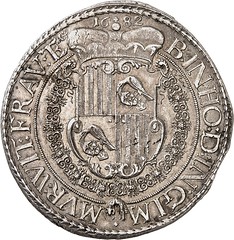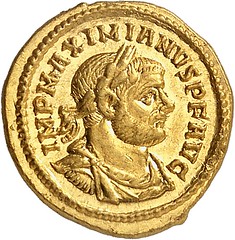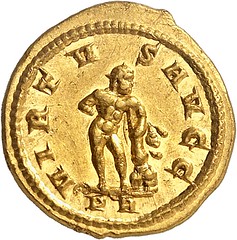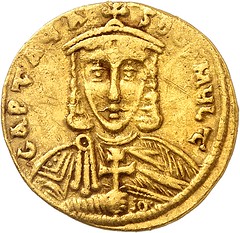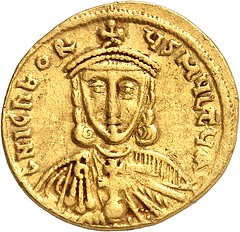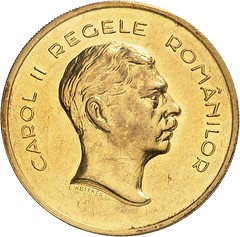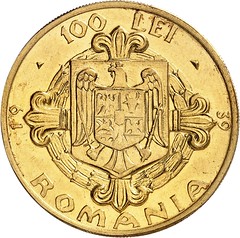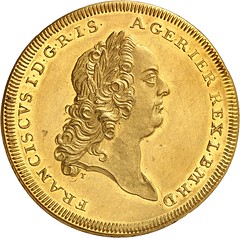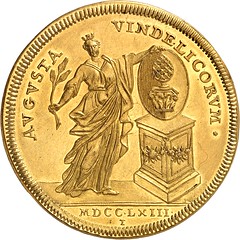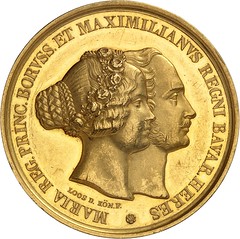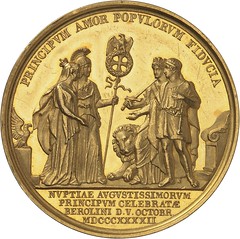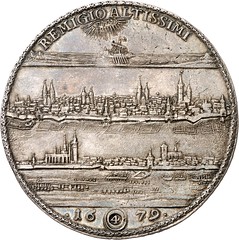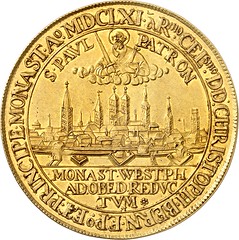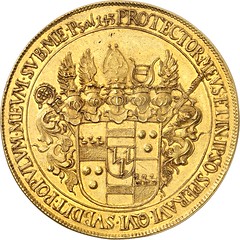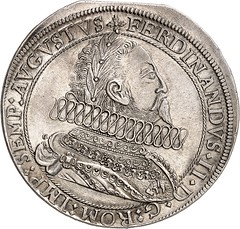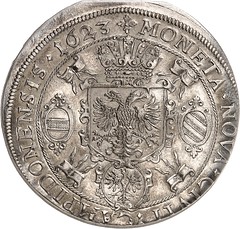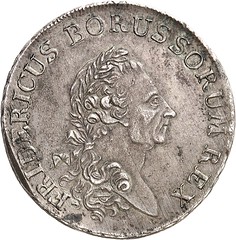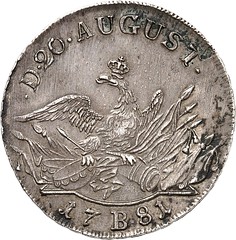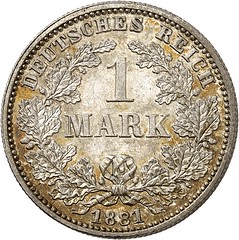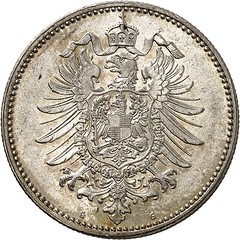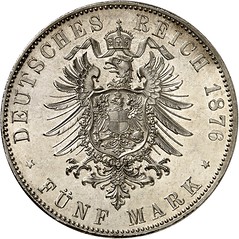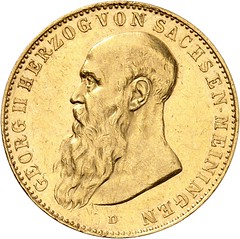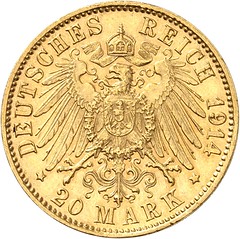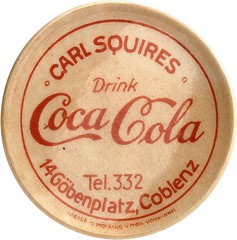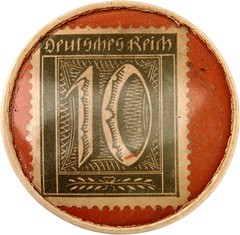
PREV ARTICLE
NEXT ARTICLE
FULL ISSUE
PREV FULL ISSUE
V25 2022 INDEX E-SYLUM ARCHIVE HEIDELBERGER MÜNZHANDLUNG AUCTION 84Here's the press release for the Heidelberger Münzhandlung auction 84, taking place May 9-11. Some beautiful coins here! -Editor Special Collection Franconian Circle at Heidelberger Münzhandlung Heidelberger Münzhandlung presents rare German coins of excellent quality and, in addition, an extensive offer of world coins from antiquity to modern times. Besides remarkable individual lots, connoisseurs will find a special collection with specimens from the Franconian Circle of the Holy Roman Empire. From 9 to 11 May 2022, Heidelberger Münzhandlung will hold its auction 84. The material is divided into two catalogues. The first one contains 429 lots with coins and medals from the Franconian Circle of the Holy Roman Empire. The second catalogue is filled with world coins from antiquity to present times. As always, there is an extensive offer of coins from the German states and German issues after 1871, but collectors of coins from the Holy Roman Empire will also find many rarities. Particularly impressive is the selection of German multiple gold coins of magnificent quality. Attention! Once again, the auction will be held as a live bidding event at the premises of Heidelberger Münzhandlung. Bidders may only participate via email, phone or online. No. 143 – Eichstätt. Sede vacante. Konventionstaler 1781, Nuremberg. Extremely fine. Estimate: 1,500 euros.
An Interesting Local Collection from the Area of the Franconian Circle The collector focused his purchases to members of the Franconian Circle, but he did not slavishly adhere to its boundaries. And that is precisely why this collection provides an excellent overview of the coin and medal production at the heart of Germany. No. 174 – Henneberg. Taler 1698, yield from the mines of Ilmenau. Rare. Extremely fine. Estimate: 2,000 euros. Issues from the following regions are on offer: Bamberg, Bavaria (issues related to Franconia), Brandenburg-Franconia, Brandenburg-Ansbach, Brandenburg-Bayreuth, the Teutonic Order starting with the election of Maximilian as Deutschmeister in 1590, Eichstätt, Erbach, Fulda, Henneberg, ... No. 201 – Hohenlohe-Kirchberg. Karl August, 1737-1767. Taler 1737, Nuremberg, commemorating the death of his father Friedrich Eberhard. About FDC. Estimate: 3,000 euros. ... Hohenlohe with its various lines, Kronach, Leuchtenberg, Löwenstein, Mainz, Nuremberg, Öttingen, Rieneck, Rothenburg ob der Tauber, Saxe-Coburg and other Saxon lines ... No. 316 – Schwarzenberg. Johann Adolph, 1641-1683. Taler 1682, Vienna. Extremely rare. Extremely fine. Estimate: 5,000 euros. ... Schwarzenberg, Schweinfurt, Weißenburg, Windsheim, Würzburg as well as joint issues of the Franconian Circle and literature on the subject. On the same day, general numismatic literature from the second part of auction 84 will be on sale. No. 543 – Maximianus Herculius. Gold quinarius. Depeyrot 417 (only 1 specimen in the possession of a museum). Mint state. Estimate: 20,000 euros.
Ancient and World Coins No. 549 – Artabasdus, 742-743. Solidus. Extremely rare. Very fine. Estimate: 20,000 euros.
At least as rare is a solidus of the Byzantine usurper Artabasdus. In his German standard work
on Byzantine coinage, Andreas Sommer writes: No. 677 – Romania. Carol II, 1930-1940. 100 lei 1939, Bucharest, commemorating the 100th birthday of Charles I. Extremely rare. Extremely fine. Estimate: 125,000 euros. In all likelihood, a gold 100 lei piece of 1939, minted by Carol II of Romania in this crucial year of his reign, must be described as an unpublished and unique specimen. The impressive denomination must probably be understood against the background of the personality cult of Carol II. Every year, Carol had himself celebrated by his people on 10 May and 8 June. He presented himself as the Conducator (= leader) sent by God, whose purpose in life was to create a new Romania. No. 950 – Augsburg. 6 ducats 1763, commemorating the Treaty of Hubertusburg. Extremely fine. Estimate: 35,000 euros.
Coins from the German States No. 1067– Bavaria. Gold medal of 12 ducats, 1842, commemorating the wedding of Max II Joseph and Marie of Prussia. Extremely rare. Extremely fine. Estimate: 20,000 euros. Of interest for collectors of Bavarian and Prussian coins is a gold medal of 12 ducats issued in 1842 on the occasion of the wedding of Max II Joseph, heir to the throne, and the Prussian Princess Marie Friederike. By the way, this unconventional queen was the first female mountaineer of the Bavarian royal house. No. 1120 – Brunswick-Wolfenbüttel. Rudolph August, 1666-1685. Löser of 4 talers with value mark, 1679, Zellerfeld. From the Friedrich Wielandt Collection. Very rare. Extremely fine. Estimate: 20,000 euros. A 1679 löser of the Brunswick Duke Rudolph August comes from the collection of the well- known numismatist Prof Dr Friedrich Wielandt (1906-1996). However, the great scholar was rather known for other research focuses. The former head of the Baden Coin Cabinet was obviously of utmost importance for Baden numismatics. Moreover, he wrote numerous standard works on the coinage of various Swiss cantons which are still used as references today. No. 1336 – Münster. Christoph Bernhard von Galen, 1650-1678. 6 ducats 1661, commemorating the caption of the city. From the Friedrich Wielandt Collection. Very rare. Extremely fine. Estimate: 20,000 euros. Another piece from the Wielandt Collection is a magnificent 6 ducat coin from 1661 that was minted to commemorate the capture of the city of Münster by its Prince-Bishop Bernhard von Galen. The variety of this weight, by the way, is extremely rare. The coin features a detailed city view of Münster with all fortifications and the towers of the major churches. No. 1268 – Kempten. Half taler 1623. Very rare. Extremely fine to mint state. Estimate: 6,000 euros. This 1623 half taler of the imperial city of Kempten is an example for the splendid quality that connoisseurs can find in Heidelberger Münzhandlung's catalogue. The very rare specimen is extremely fine to mint state.
No. 1388 – Prussia. Frederick II, 1740-1786. Taler 1781, Breslau.
Another specimen of outstanding quality is the so-called No. 1660 – German Empire. 1 mark 1881 G. Extremely rare in this quality. FDC. Estimate: 9,000 euros.
German Coins After 1871 No. 1740 – German Empire. Baden. 5 marks 1876. Extremely rare in this quality. Specimen from the Paproth Collection! First strike in proof quality. Estimate: 12,000 euros. Of course, Heidelberger Münzhandlung also offers great rarities – and presents specimens of a quality that leave nothing to be desired. A great example is this 5 marks piece from Baden of 1876 that also has an exquisite provenance: it is from the Paproth Collection. No. 2307 – German Empire. Saxe-Meiningen. 20 marks 1914. Very rare, only 1001 specimens minted. Extremely fine +. Estimate: 16,000 euros. Of course, there is a comprehensive selection for collectors of coins from the German Empire too. As an example, we show you a 20 marks piece of 1914 from Saxe-Meiningen. A coin type of which only 1001 specimens were minted and a high number was probably melted down again.
No. 2618 – Postage Stamp Token of the Carl Squires company with a stamp of 10 pfennigs
The auction closes with a collection of postage stamp tokens – a category between numismatics and philately. It is emergency money that uses a stamp as a substitute for small change. To protect the stamp, it was enclosed in a capsule that was often adorned with advertising slogans of the issuing institution. In other words: these items are virtually the descendants of English tokens. The auction catalogue of Heidelberger Münzhandlung can be purchased for the nominal fee of 12.50 euros at Heidelberger Münzhandlung Herbert Grün, Gaisbergstr. 40, 69115 Heidelberg, Germany; phone: +49 / 6221 / 65 2970; fax: +49 / 6221 / 65 297-29; email: kontakt@hdmhg.de. Of course, the catalogue is also available online: on Sixbid, biddr.com and Numisbids.
For more information, see:
Wayne Homren, Editor The Numismatic Bibliomania Society is a non-profit organization promoting numismatic literature. See our web site at coinbooks.org. To submit items for publication in The E-Sylum, write to the Editor at this address: whomren@gmail.com To subscribe go to: https://my.binhost.com/lists/listinfo/esylum All Rights Reserved. NBS Home Page Contact the NBS webmaster 
|
